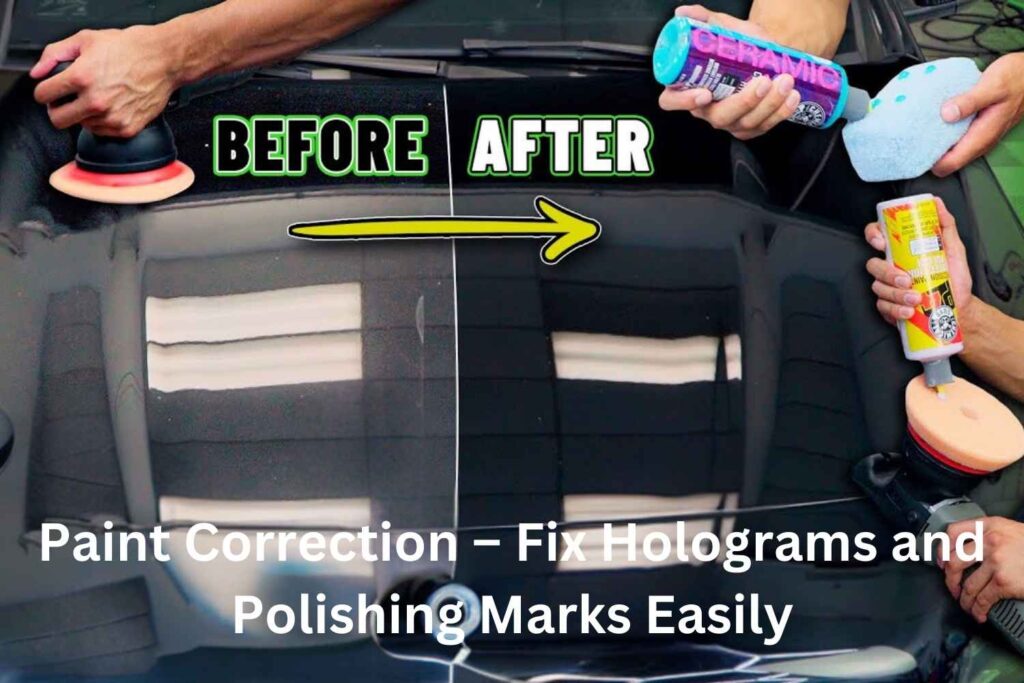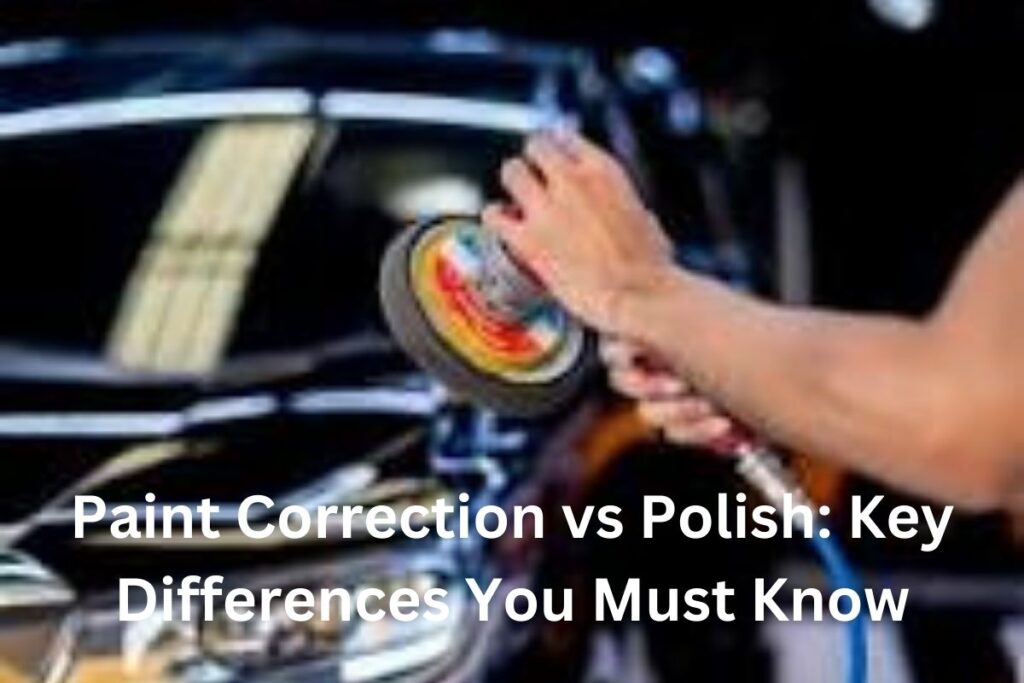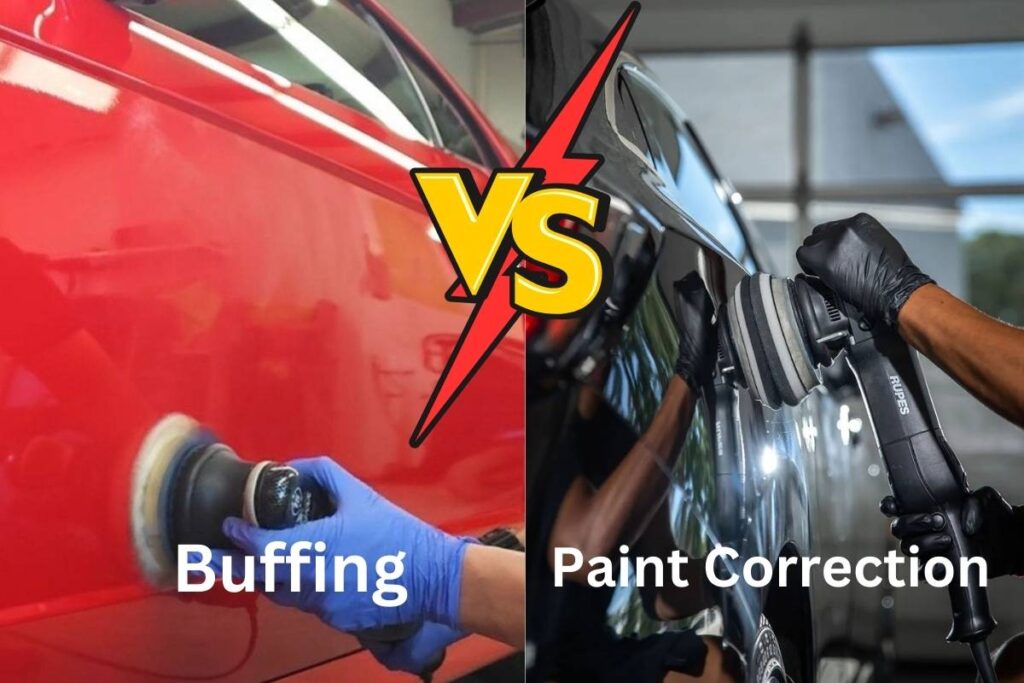Have you ever wondered how some cars keep their mirror-like shine, even after years on the road? The answer often lies in Multi Stage Paint Correction. This advanced detailing technique removes tiny scratches, swirl marks, and other imperfections, giving your car’s paint a flawless, showroom finish. Whether you’re a car enthusiast, a proud vehicle owner, or someone just looking to restore their car’s lost sparkle, understanding Multi Stage Paint Correction can make a world of difference. In this guide, we’ll break down what multi-stage correction is, how it works, and why it’s one of the best ways to protect and enhance your car’s value. By the end, you’ll know exactly how this technique can bring out the best in your vehicle’s paint—and how to keep it looking incredible for years to come.
Table of Contents
ToggleUnderstanding Multi-Stage Paint Correction
What Is Paint Correction?
First things first, let’s talk about paint correction. This is a method used by car detailers to remove tiny scratches and imperfections from the paint surface. Imagine looking at a car in bright sunlight. You might notice faint, swirling lines or tiny scratches on the surface. These are often called “swirl marks” or “spider-webbing.” Over time, these little marks can make the paint look dull, cloudy, or even faded.
Now, Multi Stage Paint Correction goes one step further than just polishing the car once. It’s called “multi-stage” because it’s done in different steps, each one carefully planned to bring out the best in the car’s paint. The goal here is to achieve that flawless, glossy finish that makes a car look polished and perfect.
Why “Multi-Stage” Paint Correction?
So, why do detailers use different stages? Imagine trying to erase a marker stain from a wall. You wouldn’t just wipe it once and hope it’s gone. You’d probably scrub a little, then maybe use a cleaner, and finally wipe it off to make sure the wall is spotless. Multi Stage Paint Correction works in a similar way.
The stages in this process allow the detailer to start by tackling the deeper imperfections first and then finish with a finer polish to make the surface look as clear and reflective as possible. By using multiple steps, detailers can remove deeper scratches and then refine the finish so that it shines. This process can truly transform the paint, making it look almost brand new again.
The Benefits of Multi-Stage Paint Correction
You might wonder, why go through all the effort of Multi Stage Paint Correction? Is it really worth it? The answer is yes! This process offers several important benefits for car owners who want their vehicles to look great. Let’s take a closer look at why this technique is so valuable.
Restores Paint Clarity and Depth
One of the biggest benefits of Multi Stage Paint Correction is that it can restore the clarity and depth of the car’s paint. Over time, a car’s paint can lose its luster. Dust, dirt, and small scratches can create a cloudy or dull look on the surface. Multi Stage Paint Correction smooths out these tiny imperfections, bringing back the paint’s original clarity. This makes the color look deeper and more vibrant, just like it did when the car was brand new.
Enhances Aesthetic Appeal and Gloss
Who doesn’t love a car that sparkles in the sunlight? Multi Stage Paint Correction adds a high-gloss finish that makes the paint look shiny and smooth. This glossy look is what makes a car stand out, catching the light and turning heads wherever it goes. This technique doesn’t just make a car look good up close—it gives it that perfect shine you can see from a distance, too.
Increases Resale Value
When a car’s paint looks fresh and flawless, it often has a higher resale value. Think about it—if you were buying a used car, wouldn’t you be more attracted to one that looks almost new? Multi Stage Paint Correction can make a big difference in how potential buyers see the car. A shiny, smooth paint finish suggests the car was well cared for, which can increase its overall value. So, if you’re considering selling your car one day, investing in paint correction could help you get a better price.
Protects the Paint and Extends its Lifespan
Another key benefit of Multi Stage Paint Correction is protection. By removing scratches and polishing the paint, this process helps keep the surface in better condition over time. Many detailers also apply a layer of protective coating, like wax or ceramic, after the correction. This extra layer shields the paint from future damage, like dirt, UV rays, and water spots. As a result, your car’s paint stays protected and looks newer for a longer period.
The Multi-Stage Paint Correction Process Explained
Now that we know why Multi Stage Paint Correction is so beneficial, let’s dive into the steps involved in this process. Each stage is important and carefully designed to bring out the best in your car’s paint. Here’s a step-by-step look at how detailers make it happen.
Stage 1: Washing and Decontamination
The first step in Multi Stage Paint Correction is to give the car a thorough wash. This step is all about getting rid of dirt, dust, and anything else stuck to the surface. Detailers use special car shampoos that clean the paint without causing any damage. After the wash, they use a tool called a clay bar. The clay bar picks up tiny particles, like metal bits or road grime, that regular washing can’t remove. This leaves the paint smooth and ready for the next steps.
Stage 2: Paint Inspection
Once the car is clean, it’s time for a close inspection. Detailers check the paint carefully under bright lights to find any scratches, swirl marks, or faded areas. This inspection helps them understand the exact condition of the paint and what needs to be fixed. Special tools, like paint thickness gauges, can measure how deep the scratches are. This stage helps detailers plan out the correction process.
Stage 3: Compounding (Cutting Stage)
This is where the real work begins. In this stage of Multi Stage Paint Correction, detailers use a compound, which is a special type of polish, to remove the deeper scratches. They often use a polishing machine with a rough pad to gently “cut” into the paint’s surface and smooth it out. This stage gets rid of major imperfections, making the paint look cleaner and less scratched. Think of it like gently sanding a rough spot on a wooden table—it’s all about getting the surface smooth.
Stage 4: Polishing (Refinement Stage)
After the cutting stage, the paint is smoother, but it still needs some extra work to look perfect. In the polishing stage, detailers switch to a finer polish and a softer pad. This step removes any tiny scratches left behind from the compounding stage. It also brings out more shine in the paint, giving it a glossy finish. This stage is where the paint starts to look really clear and reflective, almost like a mirror.
Stage 5: Finishing Touches (Jeweling/Finishing Polish)
The final polishing stage is all about those small finishing touches. This step, often called “jeweling,” is like giving the paint one last polish to make it sparkle. Detailers use a very fine polish to smooth out any remaining imperfections. This extra step makes the paint look incredibly shiny and deep, giving it that professional, showroom-quality finish.
Stage 6: Optional: Paint Protection Application
After the correction is complete, many detailers add a protective layer to keep the paint looking fresh for longer. They might apply a wax, sealant, or ceramic coating. This last step helps protect the car’s paint from future damage, like dirt, water spots, and sun exposure. It’s a great way to make the results of Multi Stage Paint Correction last as long as possible.
DIY vs. Professional Multi-Stage Paint Correction
If you’re thinking about Multi Stage Paint Correction, you might wonder whether to do it yourself or hire a professional. Let’s look at what each option offers, so you can decide which one is best for you.
Challenges of DIY Paint Correction
Doing Multi Stage Paint Correction yourself is possible, but it can be challenging, especially if you’re new to car detailing. This process requires special tools, like a polishing machine, pads, and various types of polish and compound. Without experience, it can be easy to make mistakes that might harm the paint instead of helping it. For example, pressing too hard with the machine or using the wrong polish can create more scratches or even damage the paint. DIY paint correction also takes time and patience, so it’s a big commitment.
Advantages of Professional Paint Correction
Hiring a professional for Multi Stage Paint Correction can make a huge difference in the results. Professionals have the training and experience to handle different types of paint and imperfections. They also have access to top-quality tools and products that make the process more effective. Professionals know how to inspect the paint, choose the right compounds, and apply each stage carefully to get that perfect, glossy finish. With a pro, you can trust that the work will be done safely and correctly.
Cost Comparison and Value of Professional Services
While DIY paint correction might seem cheaper, hiring a professional is often worth the investment, especially for high-value cars or those with lots of imperfections. Professional Multi Stage Paint Correction can cost more, but it also provides high-quality, long-lasting results. You’re paying for the expertise, tools, and skill of the detailer. Plus, when the paint looks this good, it can even increase the resale value of your car, making it a smart investment in the long run.
Is Multi-Stage Paint Correction Right for Your Vehicle?
Now that you know what Multi Stage Paint Correction is and how it works, you might wonder if it’s the right choice for your car. Let’s look at some key factors that can help you decide.
Factors to Consider
First, consider the condition of your car’s paint. Is it full of scratches, swirl marks, or faded areas? If your car’s paint looks dull or damaged, Multi Stage Paint Correction can bring it back to life. However, if the paint is in good shape, a simpler polish might be enough to keep it looking great. It’s also a good idea to think about the age of your car and how often it’s used. Cars that spend a lot of time outside or go on frequent drives may benefit more from a full correction.
How Often Should You Get Paint Correction?
Multi Stage Paint Correction is a detailed process, so it’s not something you need to do often. Most cars only need it once every few years, depending on how much wear and tear they experience. However, if you want to keep your car’s paint in top condition, regular maintenance like gentle washing and occasional polishing can help it stay shiny longer.
Additional Tips for Maintaining Corrected Paint
Once you’ve invested in Multi Stage Paint Correction, you’ll want to keep your car’s paint looking fresh. Regular washing is key, but make sure to use soft cloths and mild soap to avoid scratching the surface. Parking your car in the shade or using a car cover can also protect the paint from sun damage. Some people even add a ceramic coating or wax after the correction to provide extra protection. These small steps can help extend the life of your car’s paint, so it stays looking beautiful for years to come.
Conclusion: Revitalize Your Car with Multi-Stage Paint Correction
So, there you have it! Multi Stage Paint Correction is an amazing process that can bring your car’s paint back to life, making it look shiny, smooth, and almost new again. By removing scratches, swirl marks, and other imperfections, it restores the beauty of your car’s paint and helps keep it looking that way.
Choosing Multi Stage Paint Correction isn’t just about looks—it’s about taking good care of your car and preserving its value. Whether you decide to do it yourself or hire a professional, the benefits are clear. Your car will look its best, you’ll feel proud to show it off, and you might even increase its resale value down the road.
If you want to protect your investment, consider getting Multi Stage Paint Correction done. With the right care and maintenance, you can enjoy that glossy, showroom finish for years to come. Remember, a car that looks great on the outside reflects the care and pride of its owner. So, go ahead and let your car shine!
Frequently Asked Questions (FAQs)
What is Multi-Stage Paint Correction, and how is it different from regular polishing?
Multi Stage Paint Correction removes scratches, swirl marks, and dull spots using several steps to clean, smooth, and polish the paint. Unlike regular polishing, which just adds shine, this process refines each layer to create a flawless, mirror-like finish.
How long do the results of Multi-Stage Paint Correction last?
With proper care, results can last several years. Regular washing, gentle drying, and adding wax or ceramic coating help maintain the finish and protect the paint.
Can Multi-Stage Paint Correction remove all scratches?
It removes many light scratches but may not fully fix deep scratches that reach the base layer. Still, it greatly improves the overall appearance, making most imperfections less visible.
Is it safe to do Multi-Stage Paint Correction myself, or should I hire a professional?
The process requires special tools and skills, so doing it yourself can be risky. If you’re new to detailing, hiring a professional is safer to avoid potential paint damage.
Disclaimer
Multi Stage Paint Correction is a detailed process that requires specific tools, techniques, and expertise. Attempting it without proper training can potentially damage your car’s paint. For best results and to avoid accidental harm, consider seeking professional detailing services.







